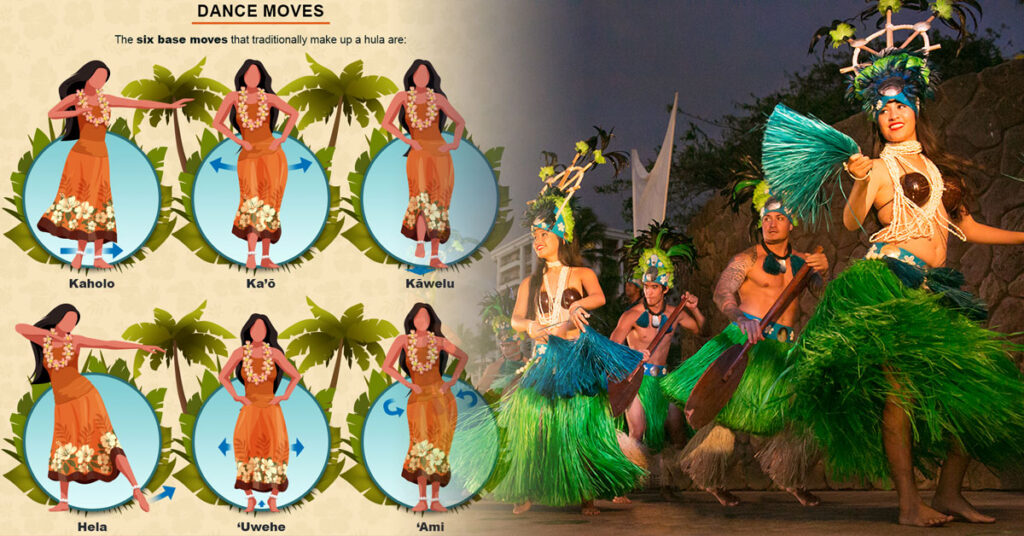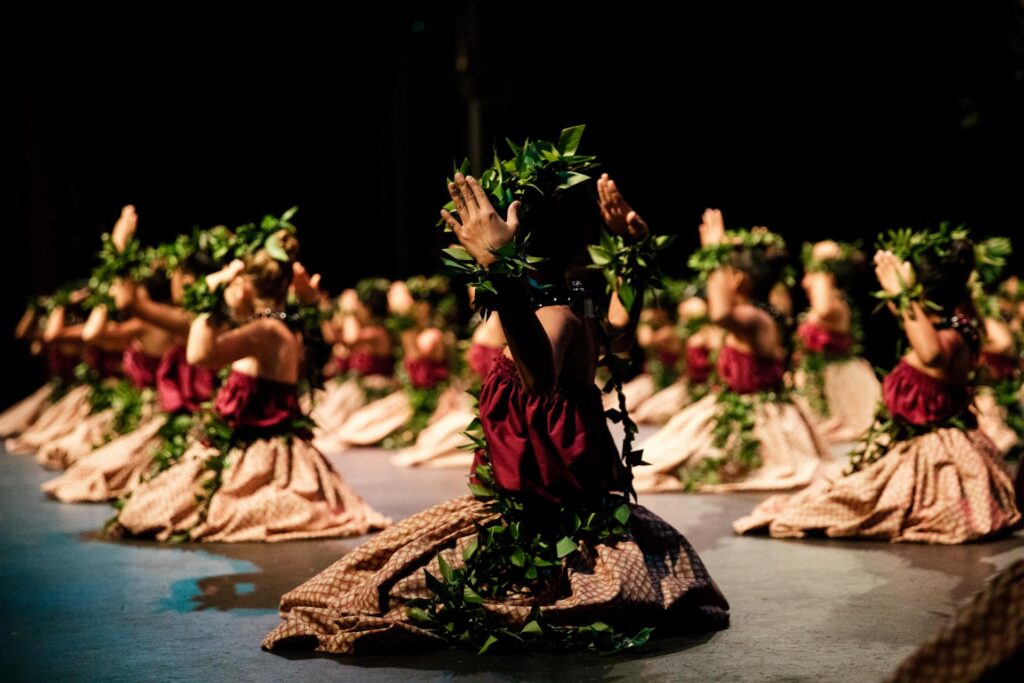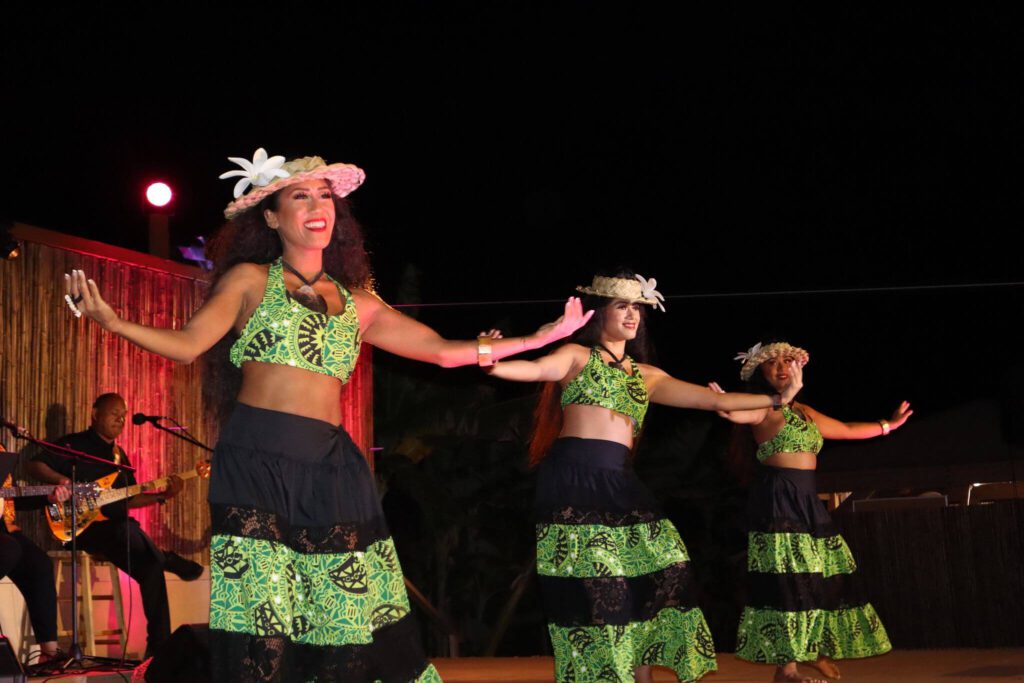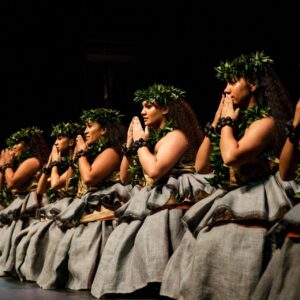Immerse yourself in the enchanting world of the hula dance and unlock the rich tapestry of Hawaiian culture. With its rhythmic movements and graceful gestures, the hula dance serves as a powerful medium for storytelling and preserving the history and traditions of the Hawaiian people. From the mesmerizing sway of the dancers to the evocative chants and vibrant costumes, you will be transported to a realm where ancient myths and legends come to life. Discover how you can fully embrace this transformative experience and connect with the cultural significance of the hula dance.
1. Understanding the Origins of Hula Dance
1.1 Ancient Hawaiian Roots
The hula dance has deep roots in the ancient Hawaiian culture. It is believed to have originated with the Polynesians who settled in the Hawaiian Islands around 500 AD. Hula was not only a form of entertainment, but it also held great cultural and spiritual significance. In ancient times, it was performed to honor and appease the gods, communicate important stories and histories, and celebrate significant events such as births, marriages, and victories in battle.
1.2 Connection to Polynesian Culture
While hula may have originated in Hawaii, it is closely connected to the broader Polynesian culture. The Polynesians, who migrated across the Pacific Ocean, brought with them their customs, traditions, and dances. Hula shares similarities with other Polynesian dance forms, such as the Tahitian ori and the Maori haka. These shared cultural roots demonstrate the interconnectedness of the Polynesian peoples and their rich cultural heritage.
1.3 Evolution of Hula Over the Years
Over the years, hula has evolved and adapted to the changing times. In the 19th century, the arrival of Christian missionaries significantly impacted the practice of hula. The missionaries considered it sinful and immoral and attempted to suppress it. However, hula managed to survive, albeit in a modified form known as hula ku’i which eliminated the more sensual movements. In the 20th century, hula experienced a revitalization, thanks to efforts to preserve and perpetuate this cultural treasure. Today, hula continues to evolve, incorporating contemporary influences while still maintaining its cultural foundations.
2. Learning the Basic Movements and Techniques
2.1 Mastering the Footwork
The footwork is an essential component of hula dance. It involves precise movements, often performed barefoot, that reflect the rhythm and meaning of the music. The basic footwork includes steps such as kaholo (side-step), Ami (circular step), and hela (slide step). By mastering these foundational movements, you can create a strong and graceful hula performance.
2.2 Hand Gestures: The Language of Hula
Hand gestures, known as ʻIliʻili, play a vital role in conveying the meaning of the hula dance. Each hand movement, known as a kuhi, represents a specific word or concept. For example, the Ohe gesture, where the fingers are held together and the palm faces upwards, signifies something long or slender. By mastering the varied hand gestures, you can express various emotions, objects, and actions through your hula performance.
2.3 Incorporating Genuine Facial Expressions
Facial expressions are an integral part of hula dance as they add depth and emotional resonance to the movements. Known as Haʻi, these expressions involve subtle movements of the eyebrows, eyes, and mouth to convey different feelings such as joy, sadness, or determination. By practicing and incorporating authentic facial expressions into your performance, you can bring the story and emotions of the hula to life.
Explore Uncharted Hawaiian Destinations
3. Immersion in Hawaiian Music and Chants
3.1 History and Importance of Mele (Songs)
Mele, or traditional Hawaiian songs, form the heart and soul of hula dance. These songs are rich in symbolism, telling stories of the land, the gods, and the people. Each mele is carefully composed to match the movements and gestures of the hula dance. By immersing yourself in the history and meaning of these mele, you can truly understand and appreciate the cultural significance of hula.
3.2 Traditional Instruments in Hula
Hawaiian music is characterized by its unique blend of melodies and the use of traditional instruments. Key instruments used in hula include the ukulele, the ipu (a gourd drum), and the pahu (a sharkskin drum). Each instrument brings a distinct sound that complements the movements and emotions conveyed in the hula dance. By familiarizing yourself with these instruments and their role in hula, you can better appreciate the intricate relationship between music and dance.
3.3 Understanding the Lyrics and Meanings
Hula songs are typically sung in the Hawaiian language, which adds an additional layer of cultural significance. The lyrics often contain hidden meanings and poetic metaphors that require a deeper understanding to fully appreciate. By delving into the lyrics and their interpretations, you can gain a deeper connection to the stories and messages conveyed through the hula dance.
4. Exploring the Traditional Costumes and Adornments
4.1 The Graceful Hula Skirt: Pa’u
The iconic hula skirt, known as the Pa’u, is a symbol of grace and femininity in hula dance. Made from natural materials such as ti leaves, the Pa’u is worn by female dancers and adds a vibrant and flowing element to their movements. By exploring the history and significance of the Pa’u, you can develop a greater appreciation for the beauty and tradition it represents.
4.2 Leis and Their Symbolism
Leis, traditional Hawaiian garlands made from flowers, leaves, or shells, are an integral part of hula costume and adornment. Each type of lei carries its own symbolism, with certain flowers representing love, respect, or celebration. By understanding the meaning behind different types of leis, you can gain insight into the cultural significance they hold within the context of hula.
4.3 Tāʻūvala: Tongan Influences on Hula Attire
Hula attire has also been influenced by other Polynesian cultures, such as the Tongan Tāʻūvala. The Tāʻūvala is a woven mat worn around the waist and is often incorporated into hula costumes. This fusion of different cultural elements highlights the interconnectedness of Polynesian cultures and their shared artistic traditions.

Plan Your Dream Hawaiian Getaway
5. Attending Authentic Hula Performances
5.1 Traditional Hula Halau (Schools)
Attending an authentic hula performance by a traditional Hula Halau is an excellent way to immerse yourself in the rich cultural heritage of hula. These schools not only showcase the beauty of hula dance but also demonstrate the dedication and expertise of their students. By witnessing the passion and precision of the dancers, you can gain a deeper understanding of the cultural significance of hula.
5.2 Festivals and Competitions
Hawaiian festivals and hula competitions offer a unique opportunity to witness the diversity and talent within the hula community. These events bring together hula practitioners from different backgrounds and regions, allowing you to experience the wide array of hula styles and interpretations. By attending these festivals and competitions, you can celebrate the vibrant traditions of hula and support the efforts of hula practitioners.
5.3 Community Events and Cultural Celebrations
Community events and cultural celebrations often feature hula performances as a way to connect with and celebrate Hawaiian culture. These events provide an inclusive and accessible platform for both local and visiting hula dancers to share their talents and passion. By participating in these events, you can witness the joy and unity that hula brings to communities and experience the cultural significance firsthand.
6. Participating in Hula Workshops and Classes
6.1 Gaining Hands-on Experience
Participating in hula workshops and classes is an ideal way to gain hands-on experience and develop your skills in this ancient art form. These workshops often delve deep into the history, technique, and cultural significance of hula, allowing you to learn from experienced instructors and immerse yourself in the hula community. By actively engaging in hula workshops, you can cultivate a greater understanding and appreciation for the art form.
6.2 Finding a Qualified Instructor
Finding a qualified hula instructor is crucial to ensure you receive proper guidance and instruction. Look for instructors who have a deep knowledge and respect for hula’s cultural roots and can teach you the foundational movements, gestures, and expressions with authenticity. A qualified instructor will not only help you master the physical aspects of hula but also provide insights into the cultural and spiritual aspects of this ancient art form.
6.3 Embracing the Hula Community
Becoming a part of the hula community is a wonderful way to deepen your understanding of the cultural significance of hula. By participating in hula classes, workshops, and events, you can connect with fellow hula enthusiasts, share experiences and knowledge, and develop lifelong friendships. The hula community embraces diversity and welcomes newcomers with open arms, offering a supportive environment that encourages growth and appreciation for hula as a cultural practice.

Experience Hawaii’s Unique Attractions
7. Traveling to Hawaiʻi: The Birthplace of Hula
7.1 Cultural Immersion in Hawaiʻi
Visiting Hawaiʻi offers a unique opportunity to immerse yourself in the birthplace of hula and experience its cultural significance firsthand. From attending traditional hula performances to exploring historical sites and museums dedicated to promoting Hawaiian culture, there are countless ways to engage with the rich heritage of hula. By interacting with locals, participating in cultural activities, and respecting the customs and traditions of the islands, you can truly embrace the spirit of hula in its authentic setting.
7.2 Visiting Historical Sites
Hawaiʻi boasts several historical sites that are closely tied to the origins and evolution of hula. Places like the Puʻuhonua O Hōnaunau National Historical Park and the Bishop Museum provide valuable insights into the culture, traditions, and history of the Hawaiian people. By visiting these historical sites, you can gain a deeper appreciation for the roots of hula and its enduring significance.
7.3 Exploring the Islands’ Natural Beauty
Hawaiʻi’s stunning natural beauty serves as a constant source of inspiration for hula dancers. From the majestic volcanoes to the lush rainforests and pristine beaches, the islands offer a breathtaking backdrop for hula performances. By exploring the natural wonders of Hawaiʻi, you can gain a deeper understanding of the deep connection between hula and the land, and the reverence that hula dancers hold for their natural surroundings.
8. Supporting Cultural Preservation Efforts
8.1 Donating to Hula Organizations
Supporting hula organizations that are actively involved in preserving and promoting the art form is a meaningful way to contribute to the cultural preservation efforts. These organizations work tirelessly to provide resources, education, and performance opportunities for hula dancers, ensuring that this rich cultural heritage continues to thrive for future generations. Consider making a donation to support their important work.
8.2 Volunteering in Cultural Programs
Volunteering your time and skills in cultural programs focused on hula is another impactful way to support cultural preservation efforts. By getting involved in community initiatives, workshops, and events, you can contribute directly to the preservation, promotion, and perpetuation of hula. Whether it’s assisting with organizing events, sharing your knowledge, or lending a helping hand, your active participation can make a difference in preserving this cherished cultural tradition.
8.3 Spreading Awareness and Education
Spreading awareness and educating others about the cultural significance of hula is an essential part of preserving this art form. Share your knowledge and experiences with friends, family, and your community by organizing presentations, workshops, or cultural evenings. By promoting a deeper understanding of hula’s history, traditions, and spiritual aspects, you can cultivate appreciation and respect for this cultural treasure.

9. Understanding the Spiritual Aspects of Hula
9.1 Hula as a Sacred Practice
Hula is not merely a performance art but also a sacred practice deeply rooted in Hawaiian spirituality. Traditional hula dancers embody the essence and energy of the gods through their movements, gestures, and expressions. By exploring the spiritual aspects of hula, you can gain insight into the reverence, devotion, and connection to the divine that is central to this ancient art form.
9.2 Connection to Hawaiian Deities
The hula dance often depicts stories and myths about Hawaiian deities, such as Pele, the goddess of fire and volcanoes, or Hiʻiaka, the goddess of hula. Understanding these divine connections and the role they play in hula allows for a deeper appreciation of the cultural and spiritual significance of this ancient art form. By learning about the deities, their stories, and their relationships to hula, you can gain a more profound understanding of the symbolic and ritualistic nature of the dance.
9.3 Incorporating Prayer and Meditation
Many hula dancers incorporate prayer and meditation into their practice as a way to honor the spiritual aspects of hula. These practices help cultivate a deeper connection to the land, the gods, and the ancestors. By incorporating prayer and meditation into your hula practice, you can create a sacred space that allows for a deeper exploration of hula’s spiritual dimensions, fostering a greater sense of connection and authenticity in your performance.
10. Embracing Hula as a Lifestyle and Mindset
10.1 Cultivating Respect and Appreciation
Embracing hula as a lifestyle and mindset goes beyond mere dance movements. It involves cultivating a deep respect and appreciation for Hawaiian culture, traditions, and values. By learning about the history, customs, and language of the Hawaiian people, you can develop a genuine understanding and respect for hula as a cultural treasure.
10.2 Incorporating Hula into Daily Life
Integrating hula into your daily life can help foster a deeper connection to the art form and its cultural significance. Whether it’s practicing the basic movements, listening to hula music, or studying the lyrics of traditional mele, finding ways to incorporate hula into your routine can keep the spirit of hula alive and vibrant in your everyday life.
10.3 Sharing Hula with Future Generations
Passing down the knowledge and traditions of hula to future generations is essential for its preservation. By sharing your love for hula with children, grandchildren, or nieces and nephews, you can ensure that this cultural treasure lives on. Whether it’s teaching them basic movements, telling them stories about hula, or attending hula performances together, you can instill a sense of appreciation and respect for hula that will be carried forward for years to come.
In conclusion, experiencing the cultural significance of hula dance involves immersing oneself in its rich history, mastering its movements and techniques, delving into its music and lyrics, appreciating its traditional costumes and adornments, attending authentic performances, participating in workshops, visiting Hawaiʻi, supporting cultural preservation efforts, exploring its spiritual aspects, and embracing hula as both a lifestyle and mindset. By embracing hula in all its facets, one can gain a profound understanding and appreciation for this ancient art form and its enduring cultural significance.
